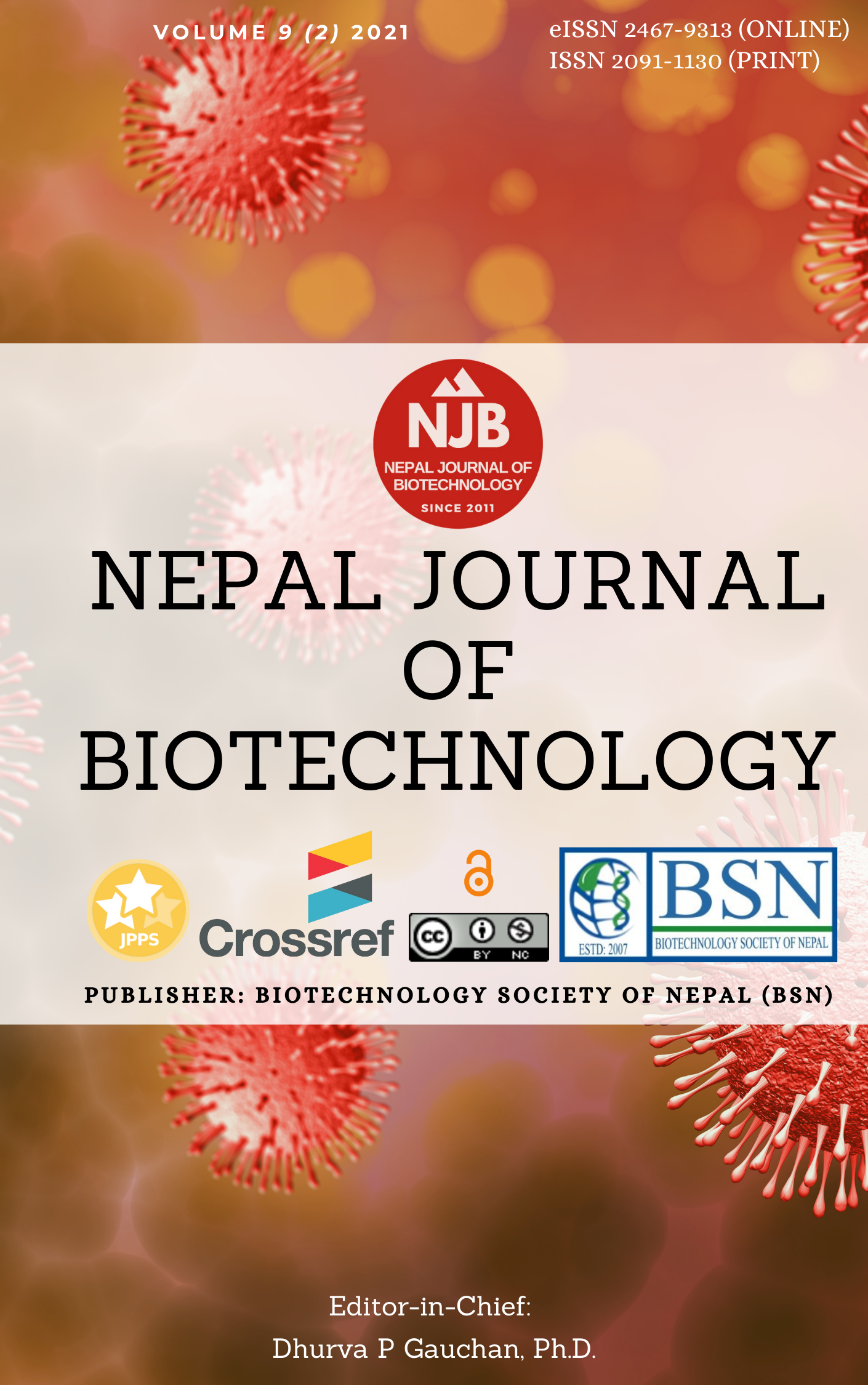Potential surface active agent production using very low grade and cheap substrate by Bacillus subtilis as microbial cell factory
Keywords:
Bacillus subtilis, Bio-surfactants, Emulsification index, Hydrocarbons, Surface tensionAbstract
Bio-surfactants are surface-active molecules which are produced by the wide range of microbes including bacteria, fungi, moulds, and yeast. This study was conducted to identify bio-surfactants by Bacillus subtilis combined with use of cheap substrates and industrial wastes (Mustard cake, Whey and Soya cake) which are found locally in Nepal. Bacillus subtilis, one of the most potential bio-surfactants producer; was isolated from soil sample of hydrocarbon contaminated site. Isolates were grown in a Minimal Salt Media (MSM) with 10% (v/v) mustard oil cake, whey and soya cake separately. The presence and potential of surfactant was determined by the oil spreading technique, emulsification index (%E24) and surface tension measurement. It was revealed that the surface tensions of cell free extract were 54.41, 60.02 and 56.64 mN/m for from mustard cake, whey and soya cake respectively as compared to distilled water (72.09) at 25oC. The emulsification index values was found to be highest in engine oil from the bio-surfactant extracted from mustard cake, soya cake and whey respectively. Similarly, mustard oil showed the lowest value of emulsification index. The highest emulsification activity was shown in mustard oil i.e. 1.13 from the cell free extract from mustard oil and lowest in engine oil i.e., 0.07, by the extract from soya cake medium, when measured in spectrophotometer at 540 nm. In conclusion, strain of Bacillus subtilis was found to be the potential surface active agent producers on the mustard oil cake, which can be useful medium for various environmental, food, medicinal and industrial processes.
Downloads
Downloads
Published
How to Cite
Issue
Section
License
Copyright (c) 2021 Biotechnology Society of Nepal

This work is licensed under a Creative Commons Attribution-NonCommercial 4.0 International License.
Copyright Notice:
The manuscript submitted to NJB must be an original contribution, not previously published and should not be under consideration for publication elsewhere. When the manuscript is accepted for publication, the authors agree to automatically transfer the copyright of the article to the publisher. It should grant permission to any third party, in advance and in perpetuity, the right to use, reproduce or disseminate your article, according to the NJB copyright and license agreement.
Authors transfer copyright to the publisher as part of a journal publishing agreement but have the rights to: Share their article for Personal Use, Internal Institutional Use and Scholarly Sharing purposes, with the NJB applies the Creative Commons Attribution-NonCommercial CC BY-NC license to all the works we publish after Jun 2020 (Before it was CC BY-NC-ND). Under this license, authors agree to make articles legally available for reuse, without permission or fees, for virtually any non-commercial purpose. Anyone may remix, adapt, and build upon your work non-commercially, and although their new works must also acknowledge you and be non-commercial, they don’t have to license their derivative works on the same terms. More details on CC BY-NC refer to its Licence Deed and Legal Code.






